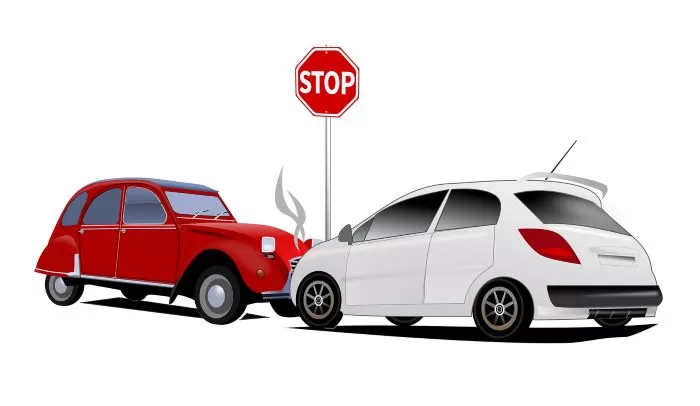Auto
Third-party Claims Against Insurers for Motor Vehicle Insurance

Third party insurance is also known as third-party liability coverage or third-party motor insurance. Third-party insurance comes as a mandatory requirement as per the Motor Vehicles Act, 1988.
It is termed third-party coverage because the scheme’s beneficiary is someone apart from the owner of the vehicle and the insurance company. This plan does not provide any coverage for the policyholder or the vehicle. Although, it includes coverage for the insured’s legal responsibility for a third party’s death, permanent disability, loss, or property damage.
The Three Parties in Motor Insurance
When it comes to third party car insurance, there are three parties involved. Unlike all other motor insurance plans where two parties are involved, the insured and the insurance provider, a third-party liability cover has one more member involved, the beneficiary. In short, it includes:
- The insurance provider: This is basically the insurance company
- The insured: The customer who purchases an insurance policy
- Third-Party: Any third-party person or property who suffers damage or loss due to an accident by the insured vehicle
About Third Party Car Insurance Premium Calculator
It is always a good idea to have insight into the premium that you have to pay for a particular car insurance plan. For this, you can use the quick digital tool, third-party car insurance premium calculator. Based on three factors, IRDAI has set the premium of third-party car insurance. It includes the cubic capacity of your car, the car’s age, and the IDV (Insured Declared Value) of your car. Below is the premium table for your quick insight:
| Your car’s Cubic Capacity | Annual Premium that you need to Pay |
| Up to 1000cc | ₹2055 |
| 1000-1500cc | ₹2863 |
| Above 1500cc | ₹7890 |
Importance of Third Party Insurance:
Third-party insurance is important because –
- The government makes third-party insurance compulsory. Thus, attaining third-party coverage helps you adhere to the rules and regulations.
- If caught without third-party insurance, you would be fined ₹2,000 and/ or imprisonment for 3 months.
- Despite being a primary option for coverage, it provides you with the security of knowing that you have adequate economic security against the harm you might cause to others in an accident.
- Your financial assets are protected from unintentional hazards by third-party car insurance.
- While third party insurance does not cover your own damage, it saves you from the legal liabilities that may arise when you cause injury/ damage to a third party person/ property.
Claim Settlement in Third Party Insurance
There could be a variety of circumstances you might run into while driving that need you to file a third-party claim. Here are a few illustrations of the same, along with instructions on how to file for a third-party claim.
- When you cause damage to third-party
Following an accident when your car causes damage to someone else’s property, you can resolve the dispute by filing a third-party claim as follows:
- To get a charge sheet, the third party or you must first file an FIR at the nearest police station.
- The FIR would be utilised to submit the claim, you will then need to distribute a digital or hard copy of your auto insurance policy.
- When you purchased your third party insurance, a digital copy was delivered to your email address, which you can share.
- Do not forget to inform your insurance provider about the incident. The necessary compensation cannot be paid without informing your insurance provider.
- The Motor Accident Claims Tribunal (MACT) handles all third-party claims; the third party must file a claim there, and the local tribunal will determine the claim’s final dollar amount.
- Your insurance provider will handle any necessary compensation on your behalf if it is necessary.
- When third-party damages your vehicle
Here is what you may do to pursue third party insurance from someone else if there is an accident and if you have been hurt or faced any kind of damage to your property from somebody else’s vehicle –
- At the time of the damage, you are required to submit an FIR to the police and request a charge sheet.
- It’s crucial that you, the third party, have solid evidence to back up your contention that the other party was at fault, such as photographs, medical records detailing the costs of your care, or records of injuries.
- You can also write down the names and phone numbers of any witnesses willing to corroborate your claims.
- Obtain the vehicle owner’s third-party motor insurance information so you can use it to submit a claim.
- Work with a motor accident attorney to submit a compensation claim to the Motor Accident Claims Tribunal (MACT)
- After considering the provided documents and the statements from both sides, the tribunal court will determine (or cancel) the compensation sum.
- While there is no restriction on compensation for injury or death, the maximum sum for property damage is ₹7.5 Lakhs.
Conclusion
Third-party car insurance is a statutory need for each motor vehicle in India. The plan lets you have the much-needed support of your insurance company when it comes to legal obligations arising due to loss or damage caused to a third-party person or property. As per the rules of IRDAI, up to ₹7.5 Lakhs compensation can be availed for third-party property damage and in case of physical injury/ death there is no cap on compensation.


















































